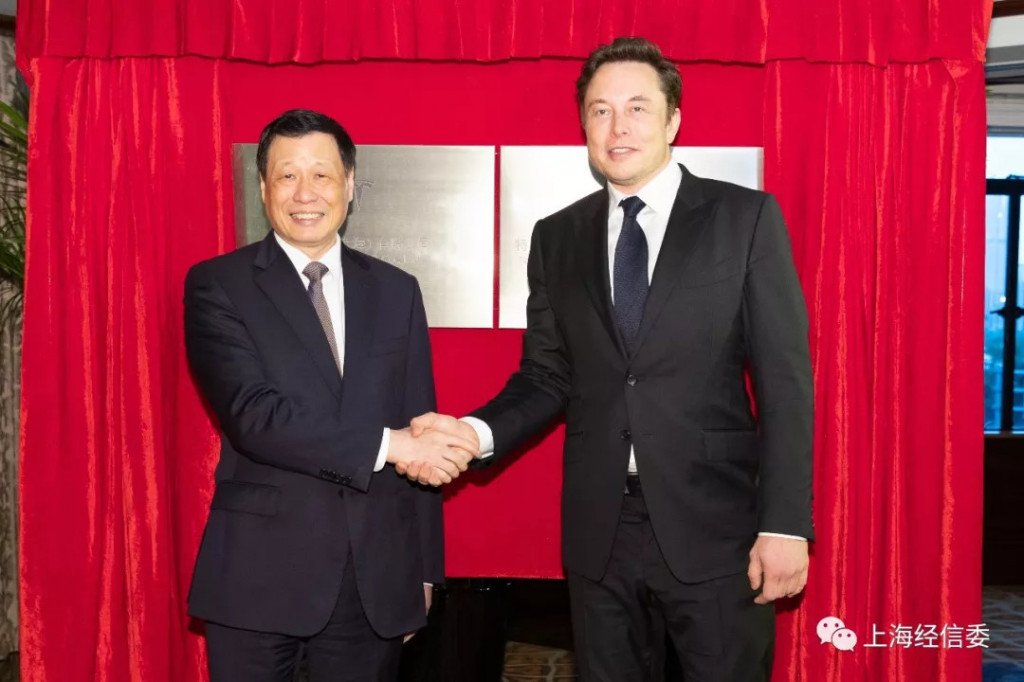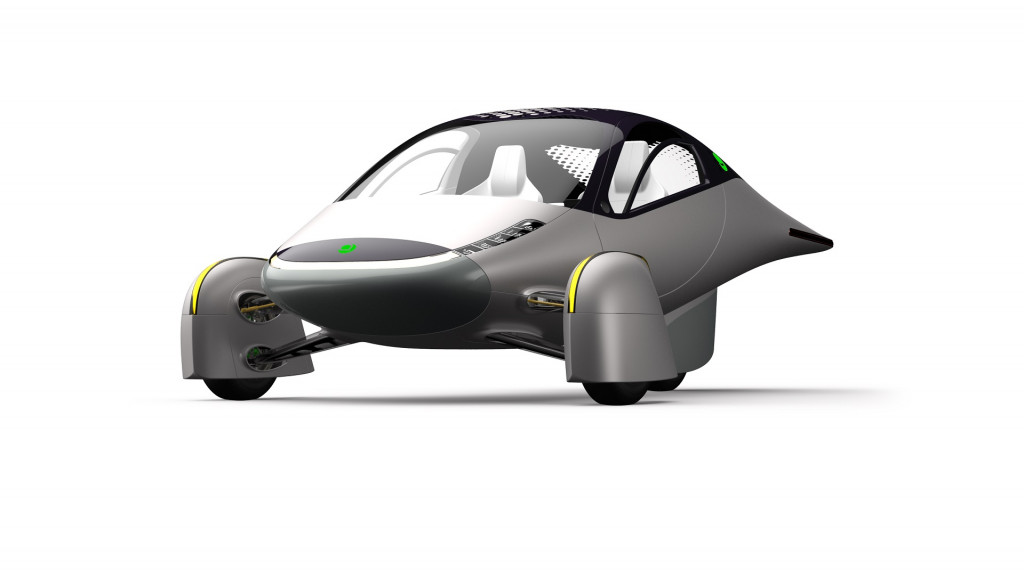What ingredient for electric-car batteries is currently in a state of oversupply?
And which electric-vehicle brand from the past dusted off the mothballs and claimed a 1,000-mile range?
This is our look back at the Week In Reverse—right here at Green Car Reports—for the week ending August 30, 2019.

Tesla CEO Elon Musk (r.) and Shanghai Mayor Ying Yong in Shanghai July 10, 2018
On Friday we brought you some reassuring news about Tesla. It has gained a purchase tax exemption on all of its vehicles—although it could still be facing some tariff trouble over the Model S, Model X, and others that it might import from the U.S.
That was just some of the news we brought you this week from China, the world’s largest vehicle market (and EV market). Nio, which has planned to enter the U.S., is offering free battery swapping in its home market. And Polestar, the electrified performance brand related to Volvo, is asserting more independence by ramping up its own factory in China.

Polestar 1 production at plant in Chengdu, China
Meanwhile back in the U.S., Polestar will be considered a standalone automaker for federal EV tax credit eligibility. And we looked ahead about a month to October 1, when GM—with all of its brands counted together—will be faced with another drop in the amount buyers of eligible vehicles like the Chevy Bolt EV can claim.
In California, the biggest electric-car market in the U.S., Tesla launched a new insurance product—although it doesn’t appear to be quite as data-driven as Elon Musk suggested several months ago.

Design for new Aptera electric car, Aug 2019
Before Tesla was taken all that seriously, a completely different electric-vehicle idea was gaining traction. Ten years later, Aptera is returning with essentially that same idea, but with modern battery tech and a range of up to 1,000 miles.
Lincoln is seeking to bolster its demographics by making the most luxurious model in its Aviator SUV lineup a robust plug-in hybrid—albeit a sort of placeholder in the lineup. Meanwhile the closely related Ford Explorer Hybrid, which skips the plug-in range, has been rated at up to 28 mpg, according to the EPA

2020 Ford Explorer hybrid
Also later in the week we considered several future vehicles, through the spy shots of our partner site, Motor Authority. A Toyota RAV4 plug-in hybrid could take some of the brand’s experience with the Prius Prime and expand it to one of the most popular vehicle segments. And the Volkswagen ID 4X—the ID Crozz as we knew it as a concept—could also arrive in that same popular size class as the RAV4.
With the Frankfurt auto show just a couple weeks away, several more concept-car teasers gave us some glimpses of the future. An Audi AI:Trail concept could show how autonomous driving and off-roading could coexist, while Lexus might finally enter the electric vehicle fold with an urban EV.

Bollinger motors preparing B1 and B2 prototypes - August 2019
Bollinger Motors isn’t headed for mass production, hasn’t gone with outside investors, and isn’t aiming to make passenger vehicles. It is planning to show the production-intent prototypes of its B1 electric SUV and B2 electric pickup at an event in Michigan September 26.
Battery suppliers are facing an unexpected glut of lithium, although other problematic materials like nickel and cobalt will likely keep battery prices from falling any faster than already anticipated.
And on the subject of battery suppliers—and coming back full-circle to China—we started the week off with the news that Tesla has chosen LG Chem to be its primary supplier for vehicle production in China.













